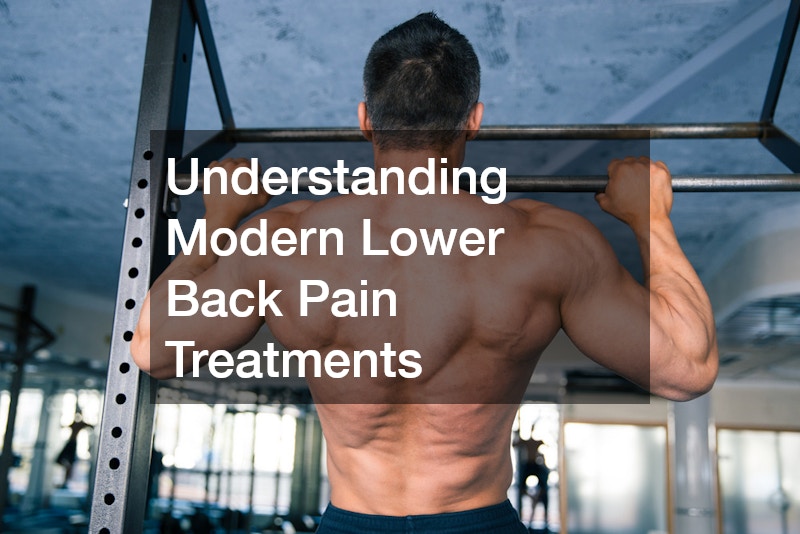This article aims to explore the various modern treatments for lower back pain, an issue affecting millions of people worldwide and impacting daily comfort, mobility, and overall quality of life. Lower back pain can stem from a variety of causes—such as muscle strain, poor posture, or underlying medical conditions—and it often leads to frustration when relief feels out of reach. By examining common questions and concerns, we hope to provide valuable insights into how to manage and treat this condition effectively, offering readers a clearer understanding of the options available and how they may fit into different lifestyles and needs.
What are the most common causes of lower back pain?
Lower back pain can stem from a wide range of sources, including muscle strains, degenerative conditions, and lifestyle-related factors. Muscle strains are among the most frequent culprits, often occurring due to sudden movements, overexertion during physical activity, or improper lifting techniques that place unnecessary pressure on the spine.
These strains can cause inflammation and stiffness, sometimes leading to lingering discomfort if not properly treated.
Over time, degenerative conditions such as osteoarthritis, spinal stenosis, or herniated discs may develop, contributing to chronic pain and reduced mobility. These age-related changes in the spine can gradually wear down protective cartilage and put pressure on nerves, leading to pain that radiates into the legs or hips. For many people, these conditions are not only physically limiting but can also interfere with everyday activities like walking, bending, or sitting comfortably.
In addition to physical conditions, lifestyle choices play a significant role in back health. Prolonged sitting, especially with poor posture, places excessive strain on spinal structures. A lack of regular exercise can weaken the core muscles that are responsible for stabilizing the spine, leaving it more vulnerable to injury. Sedentary lifestyles, combined with habits like carrying excess weight, can create a cycle of stress and tension in the lower back that becomes difficult to break.
What modern treatment options are available for lower back pain?
Numerous modern treatments exist, ranging from physical therapy and chiropractic care to advanced procedures like minimally invasive surgery. Physical therapy is often an initial approach, involving exercises to strengthen muscles and improve flexibility. Patients learn proper body mechanics to prevent future injuries.
Chiropractic care focuses on spinal manipulation to help restore alignment and alleviate pain. Many patients report success with chiropractic adjustments, seeing significant improvements in their mobility and reduction in pain levels. Other alternative therapies, like acupuncture and massage, also gain popularity for their holistic approaches to pain management.
For those who do not respond to non-invasive treatments, advanced options such as epidural steroid injections or minimally invasive surgical procedures may be available. These procedures aim to relieve pain and improve functionality, allowing patients to regain a better quality of life. Each treatment’s effectiveness varies based on individual circumstances and the precise nature of their lower back issues.
How effective are non-surgical interventions for lower back pain?
Non-surgical options, such as medication, physical therapy, and alternative therapies, can provide significant relief for many individuals. Over-the-counter pain relievers like ibuprofen or acetaminophen are common first-line treatments. These medications can help manage pain and inflammation, paving the way for more active recovery approaches.
Physical therapy has proven to be highly effective for many patients in the long-term management of lower back pain. Structured exercise programs tailored to individual needs can help restore strength, flexibility, and function. The education component of physical therapy also helps patients understand their pain and promotes better self-management strategies.
Alternative therapies, such as chiropractic care and acupuncture, also contribute positively to non-surgical pain relief. Many patients report reduced pain levels and improved mobility following such treatments. Evaluating their effectiveness is essential for patients exploring multiple pain relief options to find the most beneficial approach suited to their specific needs.
When should one consider surgical intervention for lower back pain?
Finding the right time to consider surgery can be challenging. A general guideline suggests that surgical intervention for lower back pain should be considered when non-surgical treatments have been exhausted after a consistent period. Surgery may be recommended when the pain significantly interferes with daily activities and quality of life.
Indicators prompting surgical consideration include severe pain had not responded to conservative treatments, neurological symptoms like numbness or weakness in the legs, or serious conditions like herniated discs that do not improve with non-surgical methods. The decision to proceed with surgery must involve a thorough discussion between the patient and healthcare provider.
Ultimately, surgery is usually seen as a last resort for lower back pain. It may carry risks and recovery time, with potential complications. Hence, weighing the benefits against these risks becomes critical for patients evaluating surgical options for their condition.
Understanding modern lower back pain treatments is vital for anyone suffering from chronic discomfort. By exploring common causes, treatment options, and the appropriateness of surgical intervention, patients can make more informed decisions about their care. Whether considering physical therapy, medication, or potential surgical procedures, a well-rounded understanding of these topics can empower individuals in their journey toward pain management.

